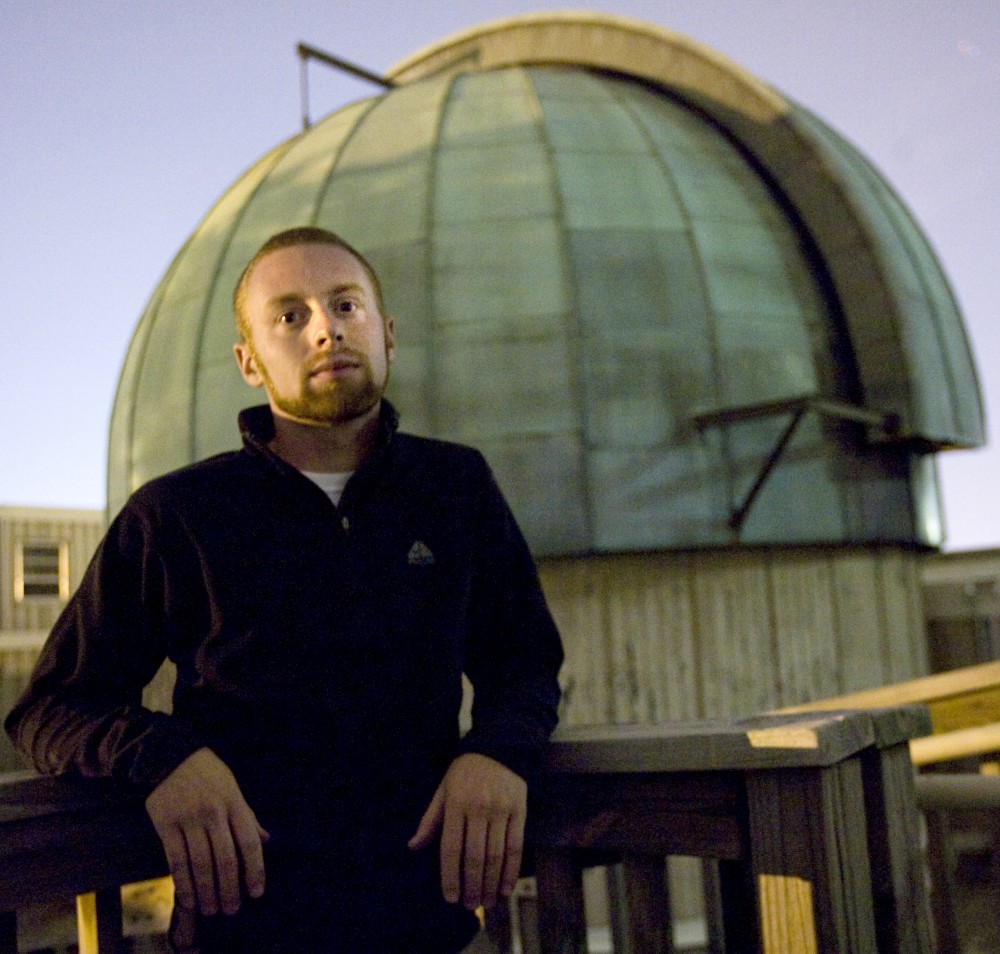University astronomy professor Evan Skillman and graduate student Dan Weisz are expanding our corner of the universe, one star at a time. Last week, the ACS Nearby Galaxy Survey , or ANGST, a collaboration led by the University of Washington and the University of Minnesota, published data from photos of millions of stars in 65 galaxies . It was made accessible to astronomers inside and outside the project to use in their research. ANGST used high-resolution cameras aboard the orbiting Hubble Space Telescope to photograph galaxies between 6.5 and 13 million light-years from Earth, which is beyond the Milky Way and a few dozen nearer neighbors. ItâÄôs the largest survey of its kind. Because the galaxies surveyed are relatively close, the images show individual stars, which means that researchers can learn about galaxy evolution in detail. âÄúItâÄôs good bread and butter research,âÄù Ray Villard, Space Telescope Science Institute news director , said. âÄúLooking to the edge of the universe has more sex appeal âĦ but the devil is in the details, and this provides new insights.âÄù The institute helps oversee Hubble. Researchers have used Hubble to look at stars in this region of the universe before, but never at this scale. âÄúHistorically, itâÄôs been a hodge podge,âÄù of individual galaxy studies, Weisz said, which means information about different galaxies wasnâÄôt always comparable. By taking many images in a single survey, ANGST could observe all the galaxies in the same way, Skillman said. University of Washington professor Julianne Delcanton heads the project, and she asked Skillman to get involved because he pioneered methods of recreating the history of star formation in nearby galaxies. Using information about the location and brightness of stars, Weisz has been making movies that show how galaxies have evolved. Skillman likened the process of deducing star formation histories to the way heights and locations of trees in a forest could be used to learn about how the forest looked throughout the past. He and previous graduate students made these movies by studying individual galaxies âÄî but with the ANGST data, Weisz will be able to create movies of 20 or 30 galaxies and compare their features. Ben Williams , a University of Washington postdoctoral researcher, said astronomers can put their theories about galaxy evolution to a more rigorous test by comparing them with ANGST data. ANGST data can teach researchers about more distant galaxies too, Weisz said, because researchers can improve the way they model star formation in those galaxies by comparing their models to ANGST observations. The ANGST team was stunned, Weisz said, when they learned they had been awarded 300 orbits with Hubble. Telescope time is competitive, with about 10 requests for every available orbit . Unfortunately, the camera ANGST was using stopped working after only 130 orbits, Skillman said, and an additional Hubble malfunction occurred just days before ANGST released its findings, delaying the camera servicing mission for several months. This leaves the future of ANGST data collection up in the air, Skillman said, but âÄúweâÄôre going to be busy over the next year analyzing the data.âÄù Due to the camera failure, researchers supplemented their images with data from previous studies. These images were all sent through a processing pipeline that transformed them into data on star location and brightness. Williams was responsible for measuring the color and brightness for all 14 million stars in the project. The measurements from the data have been released and the next step is to interpret them, he said. ANGST data is exciting because it expands the part of the universe we understand in detail, Williams added. âÄúWhere do we come from?âÄù Weisz said. âÄúWhat is the universe? We provide insight into how our galaxy came to be.âÄù

Image by Paul Bangasser
Graduate astronomy student Dan Weisz stands in front of the telescope observatory on the roof of the Tate Lab of Physics on Monday. Weisz is part of a group of researchers using the Hubble telescope to compare the development of different galaxies.
U astronomers chart galaxy formation
Published October 7, 2008
0
More to Discover







